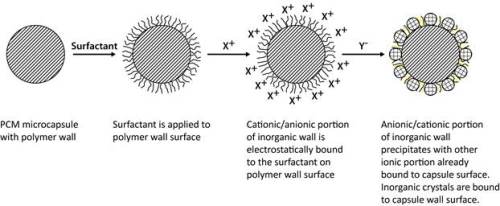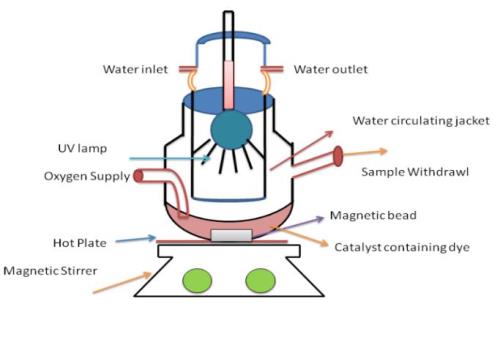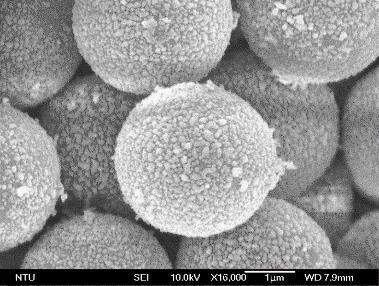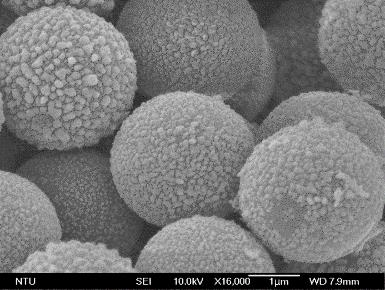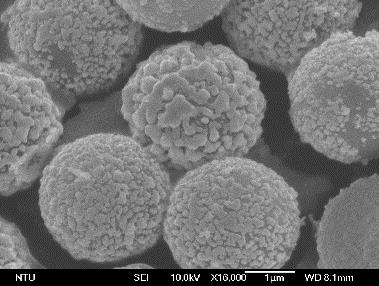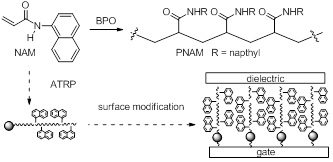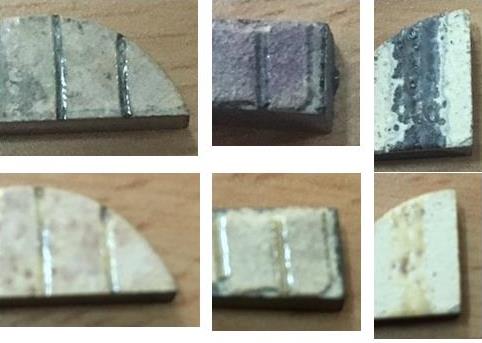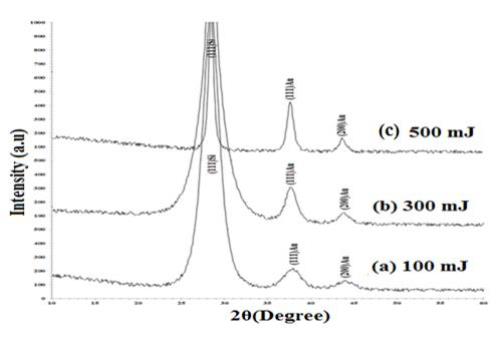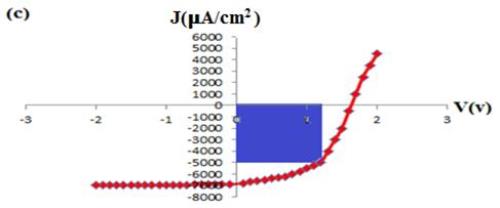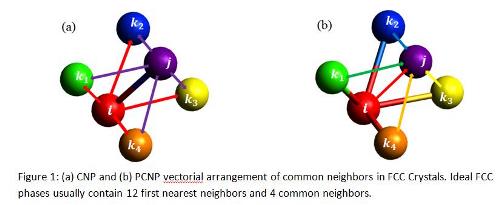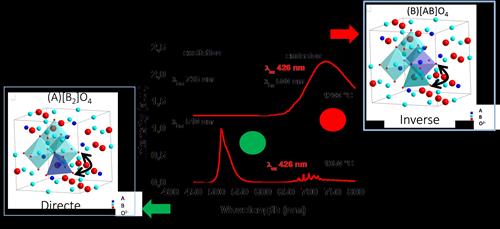Day 2 :
- Polymer Materials and Technology | Applied Materials Chemistry | Materials Chemistry and Physics | Nanomaterials
Location: Sylt 3

Chair
Hwan Kyu Kim
Korea University, South Korea

Co-Chair
P Hemalatha
Qatar University, Qatar
Session Introduction
Ian S Butler
McGill University, Canada
Title: Infrared and Raman spectroscopic study of the effect of high mechanical pressures on selected organometallic complexes embedded in poly(methylmethacrylate)
Time : 09:00-09:25

Biography:
Ian S Butler has served as the Department Chair and Associate Vice-Principal (Research) at the McGill University since 1966. He is an honorary member of the Spectroscopy Society of Canada, a Fellow of both the Chemical Institute of Canada and the Royal Society of Chemistry. He has supervised about 200 researchers, resulting in the co-authorship of about 540 publications. His honors include the Gerhard Herzberg Award for Excellence in Spectroscopy and the David Thomson Award for Excellence in Graduate Teaching and Supervision. His current research focuses on structural changes induced by high pressures and variable temperatures, biomass conversion, mechanochemistry and art forensics.
To present & exhibit your MATERIALS @ our upcoming series PS: Materials Conferences | Materials Chemistry Conferences | Materials Chemistry 2020
Abstract:
Metal-containing polymers are of considerable industrial interest; they are currently being used in molecular electronics, solar panels and catalysis. In addition, organometallic complexes such as Cr(CO)6, (η6-C6H6)Cr(CO)3 and (η5-C5H5)2Fe, when embedded in polymers, are used as infrared spectroscopy calibrants, photo-initiators for styrene polymerization and light absorbing layers in imaging devices, respectively. When subjected to high pressures, polymeric materials can evidence changes in molecular orientation, local chemical structure and even form new phases. With these possibilities in mind, we have investigated the effect of high mechanical pressures on the infrared and Raman spectra of poly(methylmethacrylate) (PMMA) and some organometallic complexes, e.g., Cr(CO)6, (η5-C5H5)Mn(CO)3 and (η6-C6H6)Cr(CO)3, embedded in PMMA, up to ~70 kbar (70,000 atm) with the aid of a commercial diamond-anvil cell. The experimental aspects of these measurements will be described and the results obtained will be discussed.
Reshef Tenne
Weizmann Institute, Israel
Title: Inorganic nanotubes and fullerene-like nanoparticles: Progress report
Time : 09:25-09:50

Biography:
Reshef Tenne has completed his PhD from the Hebrew University in Jerusalem (1976) and is currently an Emeritus Professor at the Weizmann Institute. Recently, he was awarded with Gold Medal from the Israel Chemical Society (2015) and the Rothschild Prize in Physical and Chemical Sciences (2016).
To present & exhibit your MATERIALS @ our upcoming series PS: Materials Conferences | Materials Chemistry Conferences | Materials Chemistry 2020
Abstract:
This presentation is aimed at demonstrating the progress with the high-temperature synthesis and characterization of new inorganic nanotubes (INT) and fullerene-like (IF) nanoparticles (NP) from 2-D layered compounds. A few classes of new IF/INT synthesized in our laboratory will be discussed: metal nanoparticles sheathed with a monolayer of MoS2(WS2), i.e. Au@ML-MoS2; nanotubes from misfit layered compounds- such as SrCoO2-CoO2; and Nb(Re) doped IF-MoS2 nanoparticles. Some intriguing mechanical (capillary suction of water), optical (plasmonic) and transport (superconductivity) properties of IF/INT will be discussed. Several new applications will be described as well.
Hwan Kyu Kim
Korea University, South Korea
Title: Organic and polymeric semiconductor materials for commercially useful dye-sensitized solar cells
Time : 09:50-10:15

Biography:
Hwan Kyu Kim received his PhD from Carnegie Mellon University. He has worked as a Post -doctoral Associate in Materials Science and Engineering at Cornell University. He was a Professor of Polymer Science and Engineering at Hannam University and was a distinguished Professor at the Korea University in 2007. He was the President of the Korean Society of Photoscience and Korean Organic Photovoltaics Society. His current research focuses on developing advanced organic and polymeric semiconductors for dye-sensitized solar cells, perovskite solar cells as well as solar energy conversion.
To present & exhibit your MATERIALS @ our upcoming series PS: Materials Conferences | Materials Chemistry Conferences | Materials Chemistry 2020
Abstract:
Dye-sensitized solar cells (DSSCs) have attracted much interest as a promising renewable energy supply device based on the merits of low-cost, flexibility and easy fabrication. Very recently, a variety of organic dyes using inexpensive metals has been prepared for DSSCs. A state of the art DSC based on porphyrin-based solar cells with cobalt-based electrolyte has exceeded the conversion efficiency of 13.1%. For the high PCE of D-π-A sensitizer-based DSSCs, the structural modifications of a π-bridge, including tuning the energy levels and the improvement of intramolecular charge transfer (ICT) from D to A of the sensitizer, are particularly essential. We demonstrate that new thieno[3,2-b]indole(TI)-based D-π-A sensitizers and D–π–A structured Zn(II)–porphyrin sensitizers based on the structural modification of SM315 as a world champion dye for efficient retardation of charge recombination and fast dye regeneration were synthesized. The device with new porphyrin sensitizers exhibited the higher photovoltaic conversion efficiency (PCE) than those of the devices with SM315 as a world champion porphyrin dye and the TI-based DSSC exhibits a highest PCE (12.45%) than does TBT-based DSSC (9.67%). To further improve the maximum efficiency of the DSSCs, the first parallel-connected (PC) tandem DSSCs in the top cell with a TI-based sensitizer and bottom cell with a porphyrin-based sensitizer were demonstrated and an extremely high efficiency of 14.64% was achieved. In this presentation, new strategy on materials paradigm for low-cost, long-term stable, highly efficient dye-sensitized solar cells will be described in order to give right answers in overcoming the limitation of the existing technology for the practical use.
M Tréguer-Delapierre
University of Bordeaux, ICMCB-CNRS, France
Title: Design and synthesis of hybrid nano-objects of unconventional morphologies
Time : 10:15-10:40

Biography:
M Tréguer-Delapierre is an Associate Professor in Materials Chemistry at the University of Bordeaux. She graduated with a PhD in Physical Chemistry from the University of Orsay (South Paris) in 1999. She has received an award from the Chancellerie des Universités de Paris for her PhD thesis. After a Post-doctoral fellowship at the University of Notre Dame, Indiana (USA) with Dan Meisel, she joined the faculty as an Associate Professor in the Chemistry department at the University of Bordeaux, in 2000. Her current interest involves the synthesis of hybrid nanoparticles, mainly based on metal and semiconductor, with size and shape control and therefore with desired optical properties. Furthermore, her research is also focused on the surface modification and the directed self-assembly of the nanoparticles to improve their versatility.
To present & exhibit your MATERIALS @ our upcoming series PS: Materials Conferences | Materials Chemistry Conferences | Materials Chemistry 2020
Abstract:
Combining material components of different nature in the same nanoparticle is a new challenge in Nanoscience and offers a wide range of new and largely unexplored possibilities for developing novel materials. In particular, proper design of the hybrid nanoparticle should permit a control over the interaction of the material components to combine different confinement-induced properties, create new ones or introduce new functionalization. In this presentation, we will focus on the synthetic route of metallo-dielectric components targeting sensing, photonic materials as well as super lenses. We will show how to build stable and robust raspberry-like nanostructures with close-packed plasmonic satellites with high purity and high reproducibility as well as their unusual optical properties. They exhibit numerous hot spots at satellite junctions, resulting in excellent surface-enhanced Raman scattering (SERS) performance as well as artificial optical magnetism properties at visible light frequencies. These properties are found to be highly dependent on their structure. Finally, we will evidence how to get control of positioning of each component with respect to the other by using the concept of patchy particles. By using dielectric particles with a well-controlled number of patches at their surface, we will show how the number and the location of the plasmonic satellites could be elegantly controlled in order to enhance the optical properties. The self-assembly of these elemental nanosystems offers new possibilities to create complex supracolloids for optical metamaterials or for the ultrasensitive screening of analytical targets, such as those relevant to medical and environmental sciences.
Carl M Lentz
Microtek Laboratories, USA
Title: Dual purpose antimicrobial phase change materials
Time : 10:55-11:20

Biography:
Carl M Lentz has been the Director of New Technology Development since 2012 at Microtek Laboratories, Inc., in Dayton, OH, USA, working to improve and develop new microencapsulation techniques and products. He graduated from James Madison University with a degree in Chemistry. He did his PhD from the Johns Hopkins University in Synthetic Organic Chemistry and Biochemistry. He has experience in both laboratory and production scaled projects in companies such as Eastman Kodak and Ferro Corporation with his most recent work at Microtek Laboratories Inc.
To present & exhibit your MATERIALS @ our upcoming series PS: Materials Conferences | Materials Chemistry Conferences | Materials Chemistry 2020
Abstract:
The healthcare industry, sports and fitness industry, and military (naming a few) all require thermal comfort as well as protection from microbial growth and infection when engaging in coinciding treatments, athletic performances and job tasks. Through recent innovation by Microtek Labs, the ability to provide thermal regulation in conjunction with antimicrobial properties has been achieved by tethering a silver (I) coating to the wall of a microencapsulated phase change material (PCM) using a surfactant. The coated PCM microcapsule can be easily incorporated into various coatings, resins, solvent based and aqueous based systems. The duality of thermal comfort in combination with microbial inhibition and resistance is achievable in an area that is approximately 2.7x10-7 cm3. The PCM provides thermal comfort and regulation while the silver (I) coating provides protection against microbial growth and infection. In further explanation, a PCM is a substance with a high heat of fusion capable of storing and releasing large amounts of energy through a phase transition around a certain temperature. PCMs are classified as latent heat storage units. Latent heat storage is typically utilized during the solid-liquid transitions in thermal storage applications. PCM’s can be microencapsulated for easy incorporation into innumerable applications. Microencapsulated PCMs are currently being used in a wide variety of fields and industries including textiles, mattress and bedding, electronics, building and construction, paints and coatings, supply chain, medical, food and beverage, automotive, spacecraft thermal systems, and solar power plants. The coating of the PCM microcapsules using silver (I) is to aide in the prevention and mitigation of microbial growth and infection. A growing and developing problem with many antimicrobial products is microbial resistance to the antimicrobials. According to the World Health Organization, antimicrobial resistance is threatening the effective prevention of infections caused by microbes, where antimicrobial resistant bacteria are causing a high percentage of infections acquired in hospitals. Ionized Silver (I) is an antimicrobial that has shown no increase in antimicrobial resistance. Silver (I) is detrimental to microbial cells without causing harm to animal cells. Historically, the antimicrobial activity of silver (I) was utilized in WWI to prevent infections in wounds of soldiers. In current literature, silver nanoparticles are being incorporated into clothing and textiles to prevent odors associated with bacterial and fungal growth found in sweat. The inability to effectively tether these nanoparticles to textiles causes them to wash out over time. Coating a particle, such as a microencapsulated PCM (Or other micro-carrier), in silver (I) allows for easy incorporation and application into a diverse array of substrates. This can include textile coatings used to tether the particles to the fabric, paints, resins, solvent and aqueous based systems, and a variety of additional substrates for expansive industrial uses. The unique incorporation of microencapsulated PCM with a silver (I) coating allows for thermal regulation, antimicrobial protection and easy substrate dispersion.
To demonstrate the silver coating is in fact, coating the PCM capsules, SEM images are provided below in Figure 1. In the SEM images, silver appears brighter and white, as the electron density of silver is much higher than that of the organic microcapsule wall. From this, the silver coating is very well attached to the PCM microcapsules.
P Hemalatha
Qatar University, Qatar
Title: Piezoelectric and dielectric properties of poly(vinylidene fluoride)/ZnO nanocomposites
Time : 11:20-11:45

Biography:
P Hemalatha received her PhD degree from Madurai Kamaraj University, India. Her area of specialization is Nanotechnology. Currently, she is working as a Research Assistant at Qatar University, Qatar. Her project is related to polymer nanocomposites for piezoelectric application.
To present & exhibit your MATERIALS @ our upcoming series PS: Materials Conferences | Materials Chemistry Conferences | Materials Chemistry 2020
Abstract:
The poly(vinylidene fluoride) (PVDF)/zinc oxide (ZnO) nanocomposites films were successfully prepared by mixing the fine ZnO particles into PVDF solution followed by film casting and sandwich techniques. Zinc oxide nanoparticles were synthesized by hydrothermal method. Fourier transform infrared (FT-IR) spectroscopy, X-ray diffraction (XRD) and scanning electron microscopy (SEM) were used to characterize the structure and properties of the obtained nanocomposites. The dielectric properties of the PVDF/ZnO nanocomposites were analyzed in detail. In comparison with pure PVDF, the dielectric constant of the nanocomposite (1 wt% ZnO) was significantly improved. The piezoelectric co-efficient of the nanocomposites films were measured. Experimental results revealed the influence of filler on the properties of PVDF and enhancement in the output performance and dielectric properties reflects the ability for energy storage capabilities.
Sonik Bhatia
Kanya Maha Vidyalaya, India
Title: Photocatalytic and gas sensing applications for lanthanide-doped/co-doped ZnO nanoparticles
Time : 11:45-12:10

Biography:
Sonik Bhatia did his PhD from Guru Nanak Dev University, Amritsar under the guidance of Dr. R K Bedi. Currently, he is working as an Assistant Professor in Kanya Maha Vidyalaya, Jalandhar. He has his expertise in Materials Science. He is working on a major research project granted by University Grants Commission New Delhi. Recently, he visited France and Spain to present his research work on metal oxide based semi-conductor materials. He has number of publications in reputed journal.
To present & exhibit your MATERIALS @ our upcoming series PS: Materials Conferences | Materials Chemistry Conferences | Materials Chemistry 2020
Abstract:
Statement of the Problem: Nowadays, tremendous increase in population and advanced industrialization augment the problems related to air and water pollutions. Growing industries promoting the environmental danger, which is an alarming threat to ecosystem. For safeguard of environment, detection of perilous gases and release of colored waste water is required for eutrophication pollution. Researchers around the globe are trying their best efforts to save the environment. For this remediation advanced oxidation process is used for potential applications. ZnO is an important semiconductor photocatalyst with high photocatalytic and gas sensing activities. For an efficient photocatalytic and gas sensing properties, it is necessary to prepare doped/co-doped ZnO compound to decrease the electron-hole recombination rates. However, lanthanide doped and co-doped metal oxide is seldom studied for photocatalytic and gas sensing applications. The purpose of this study is to describe best photocatalyst for photo degradation of dyes and gas sensing properties.
Methodology & Theoretical Orientation: Economical framework has to be used for synthesis of ZnO. In depth literature survey, simple combustion method is utilized for gas sensing and photocatalytic activities.
Findings: Rare earth doped and co-doped ZnO nanoparticles were best photocatalyst for photodegradation of organic dyes and different gas sensing applications by varying various factors such as pH, aging time, and different concentrations of doping and co-doping metals in ZnO. Complete degradation of dye was observed only in min. Gas sensing nanodevice showed better response and quick recovery time for doped/co-doped ZnO.
Conclusion & Significance: In order to prevent the air and water pollution, well crystalline ZnO nanoparticles were synthesized by rapid and economic method which is used as photocatalyst for photodegradation of organic dyes and gas sensing applications to sense release of hazardous gases from the environment.
Systematic designed photoreactor for photo-degradation of dye.
Jawad K Oleiwi
University of Technology, Iraq
Title: Effect of siwak and bamboo fibers on tensile properties of self-cure acrylic resin used for denture applications
Time : 12:10-12:35

Biography:
Jawad K Oleiwi is a Faculty Member of Department of Materials Engineering at the University of Technology, Baghdad, Iraq. His fields of research interests are composite materials, biomaterials, implants, prosthetic materials and mechanical tests. He has more than 40 published papers in journals and conferences and has two patents in field of composite materials. He is the member of Iraqi Union of Engineers since 1990 and member of Iraqi Society of Nanotechnology.
To present & exhibit your MATERIALS @ our upcoming series PS: Materials Conferences | Materials Chemistry Conferences | Materials Chemistry 2020
Abstract:
This study was investigated to evaluate improvements in the tensile properties of self-cure acrylic resin reinforced with siwak fiber and bamboo fibers which were cut into 2, 6, and 12 mm lengths and used at three different concentrations of (3, 6 and 9 wt.%). The mixture of resin and fiber were cured at 2.5 bar and 55ºC in a water bath for 30 min. The cured resin specimen tested for tensile properties (tensile strength, modulus of elasticity, elongation percentage at break) following the methods of ASTM Specification No. 638. The results illustrated that the tensile strength and modulus of elasticity tended to be improved with fiber length and concentration, the largest values of tensile strength and modulus of elasticity for specimens reinforced with bamboo fibers are ( 72.4 MPa and 5.208 GPa) while for specimens reinforced with siwak fibers are (71 MPa and 4.9 GPa) at optimum condition of weight fraction ( 9% ) and fiber length (12 mm), which was significantly higher than other formulations.
Donglu Shi
Tongji University, China
Title: The effect of laser penetration depth on photothermal ablation of cancer cells by surface functionalized Fe3O4
Time : 12:35-13:00

Biography:
Donglu Shi received his PhD in Engineering from the University of Massachusetts at Amherst. Upon graduation, he worked at Argonne National Laboratory for 8 years as a Staff Scientist carrying out research in the field of Electronic Materials. He is currently the Chair of the Materials Science and Engineering Program at University of Cincinnati. He is also an Adjunct Professor at the Institute for Biomedical Engineering and Nano Science at Tongji School of Medicine. He has published 270 SCI papers with an h-index of 46.
To present & exhibit your MATERIALS @ our upcoming series PS: Materials Conferences | Materials Chemistry Conferences | Materials Chemistry 2020
Abstract:
Nanoparticle mediated photothermal ablation of cancerous tissue shows promising results and applicability as a highly efficacious treatment method. A majority of the photothermal work has been conducted with minimal attenuation of the laser before reaching the nanoparticles within surface seeded tumors in-vivo or through buffered media in-vitro, it is important to understand the effects of greater laser attenuation on photothermal efficacy mediated by changes in the scattering and absorption of the laser. Photothermal efficacy using a near infrared (NIR) 785 nm laser irradiating polystyrene (PS) stabilized magnetite (Fe3O4) nanoparticles (PS-Fe3O4) is examined on MDA-MB-231 human mammary gland adenocarcinoma in-vitro. Agarose gel columns of various heights were created to simulate soft tissue and subsequently used for NIR laser attenuation.
- Poster Presentations
Location: Sylt Foyer

Chair
M Treguer-Delapierre
University of Bordeaux, ICMCB-CNRS, France
Session Introduction
Chung-Shin Lu
National Taichung University of Science and Technology, Taiwan
Title: Synthesis of silver vanadates (AgVO3, Ag3VO4, and Ag4V2O7) by controlled hydrothermal method and their photocatalytic properties

Biography:
Chung-Shin Lu received his PhD degree in Chemistry from the Tsing Hua University, Taiwan, in 1994. He is currently a Professor at the National Taichung University of Science and Technology, Taichung, Taiwan. His interests are focused on the analysis and treatment of environmental pollutants. His team is currently working on the synthesis of various photocatalysts and investigating their photocatalytic abilities for removing organic pollutants in an aqueous solution.
To present & exhibit your MATERIALS @ our upcoming series PS: Materials Conferences | Materials Chemistry Conferences | Materials Chemistry 2020
Abstract:
Silver vanadates have received remarkable attention in recent years because of their stability, suitable band gaps, and relatively superior photocatalytic abilities. This study synthesizes silver vanadates and investigates their photocatalytic abilities for removing crystal violet (CV) and atrazine under visible-light irradiation. The silver vanadate photocatalysts with high photocatalytic performance are prepared by the hydrothermal method. The composition and morphologies of silver vanadates could be controlled by adjusting some growth parameters, including reaction pH, temperature, and the ratio of silver to vanadium in starting material. The as-prepared silver vanadates are characterized by X-ray diffraction (XRD), scanning electron microscopy (SEM), X-ray photoelectron spectroscopy (XPS), UV–Vis diffuse reflectance spectra (DRS) and BET surface area analysis. It is demonstrated that AgVO3, Ag3VO4, and Ag4V2O7 can be selectively prepared through the hydrothermal method. Diffuse UV–Vis spectra show the three materials being the indirect semiconductors with optical bandgaps of 1.85–2.33 eV. Crystal violet and atrazine could be successfully degraded in the presence of silver vanadate catalyst under visible-light irradiation. The obtained results show complete degradation of crystal violet after 24 h, and over 97% of atrazine was degraded after 72 h of treatment. Liquid chromatography coupled with electrospray ionization mass spectrometry was applied to the analysis of the samples coming from the photocatalytic degradation of atrazine. The experimental results showed that there were nine intermediates existing in the photocatalytic reaction. Potential degradation pathways for atrazine were evaluated exhibiting three different degradation pathways including dechlorination–hydroxylation, alkylic-oxidation and de-alkylation. This is a study to show the superior activities of AgVO3, Ag3VO4, and Ag4V2O7 as a promising visible-light-responsive photocatalyst.
Chia-Fen Lee
Chia Nan University of Pharmacy and Science, Taiwan
Title: Synthesis and characterization of conductive core-shell Ag-polystyrene latex particles used as fillers in anisotropic conductive films

Biography:
Chia-Fen Lee has her expertise in Polymer Materials and has interest in the study of the synthesis of polymer latex particles. She has synthesized various kinds of inorganic/polymer composite latex particles successfully for many years of experience in research. The conductive core-shell composite polymer particles are novel particles that can be used as fillers in anisotropic conductive films.
To present & exhibit your MATERIALS @ our upcoming series PS: Materials Conferences | Materials Chemistry Conferences | Materials Chemistry 2020
Abstract:
In this study, a modified electroless silver plating process was used to prepare the monodisperse Ag-coated polystyrene core-shell type particles (Ag-PS). Silver nuclei produced on polystyrene particles with an electroless plating method served as nucleation sites for the growth of silver shell. A scanning electron microscope (SEM) was used to observe the particle size and morphology of Ag-PS particles. The results showed that a dense, stable and uniform silver shell grew on the surface of PS particles to form the Ag-PS composite particles with the diameter of 3 μm. The bulk conductivity of the Ag-PS composites could achieve 2427 S/cm with only 36% silver content. According to the results, the Ag-PS composite particles have great potential to be used as fillers in anisotropic conductive films.
SEM images of Ag-PS composite particles with different silver content (a)27%, (b)36%, (c)51%, and (d)68%.
Valeria Pozzoli
University of Buenos Aires, Argentina
Title: Polymerization of N-1-naphtylacrylamide revisited

Biography:
Valeria Pozzoli is a PhD student in the Faculty of Engineering of the University of Buenos Aires. She has skills in organic synthesis and is currently working on the synthesis of monomers and their polymerization reactions. She is interested in organic materials for technological applications and enjoys the interdisciplinary work. She also teaches Organic Chemistry for undergraduate students of Chemical Engineering in the University of Buenos Aires and National Technologic University.
To present & exhibit your MATERIALS @ our upcoming series PS: Materials Conferences | Materials Chemistry Conferences | Materials Chemistry 2020
Abstract:
Statement of the Problem: Transistors and other optoelectronic devices are mainly responsible for the great technological advances in recent years. Although, the improvement of their performances is a goal pursued still. Organic thin-film transistor (OTFT’s) and organic field-effect transistor (OFET’s) showed low carrier mobility and operational overvoltage which decrease their effectiveness and, in many cases, this is attributed to “pinholes” on the gate-dielectric interface. This effect is canceled by using a polymer as gate insulator.
Methodology & Theoretical Orientation: In order to evaluate the effect of poly N-(1-naphtyl)acrylamide (PNAM) as gate insulator, we synthesize this homopolymer as well as some co-polymers with methyl methacrylate. Using these materials we try to establish if the presence of fused aromatic rings as polymer pendant groups, are able, in addition to pinhole passivation, to induce some ordering in the deposition of the organic semiconductor. In spite of having been described the synthesis of PNAM in a 1967 patent, bibliographical data about its characterization could not be traced. In this work we report the characterization of PNAM and its co-polymers, obtained by polymerization in solution.
Findings: The monomer (N-1-naphtylacrylamide, NAM) was easily synthesized by reacting 1-napthylamine with acryloyl chloride in presence of a base in a good yield, and it was characterized by NMR spectra. The polymerization yield of NAM is strongly dependent on initiator concentration, but this factor had little influence on. In every case, the found was lower than expected for a vinyl polymerization. When PNAM was synthesized in 1,4-dioxane solution, filmogenic capacities are better than when the synthesis is carried out in DMF.
Conclusion & Significance: Even when this polymer is cited in many patents for technological applications, this is the first characterization informed. At this moment, we are testing ATRP polymerization techniques of NAM in order to get end functionalized PNAM for surface gate modifications.
Synthetic scheme of PNAM and final goal of this work
Mina Samadipour
K N Toosi University of Technology, Iran
Title: Mg2+ doped nano-hydroxyapatite/chitosan: Synthesis, characterization and study on bio-properties

Biography:
Mina Samadipour has done her BSc in Applied Chemistry and MSc in Inorganic Chemistry. She has expertise in R&D of synthesis and characterization of bio-properties of inorganic chemical materials as nano-hydroxyapatite. She is currently working on the biomedical properties of calcium phosphate family to create new pathways for improving healthcare.
To present & exhibit your MATERIALS @ our upcoming series PS: Materials Conferences | Materials Chemistry Conferences | Materials Chemistry 2020
Abstract:
Hydroxyapatite via the formula Ca10(PO4)6OH2 (HAP), which is an important member of calcium phosphate family, has been useful applications in biomedical, that is due to non-toxicity, biocompatibility and high osteoconductivity. There are many studies for improve HAP properties, one of them to make it more useful is doped HAP with different metal ions such as Ba2+, Co2+, Sr2+, Zn2+, etc. On the other hands incorporation of HAP with organic polymers such as chitosan (CS), gelatin, collagen, etc., that made it operational, would be used in biomaterial engineering. In this work, Mg2+ doped nano-hydroxyapatite/chitosan (Mg-nHAP/CS) fabricated by a sol-gel method. Product was characterized by powder X-ray spectroscopy (XRD), Fourier transform infrared spectroscopy (FTIR), scanning electron microscopy (SEM) and energy dispersive X-ray (EDX) spectroscopy. XRD results shown that dopants slightly effect on lattice parameters and crystallinity. On the other hand compared to the diffraction peaks of highly crystalline HAP, the broadening of the diffraction patterns shows low crystallinity of synthesized samples. According to the FTIR results it is shown that the typical peaks of (OH-) and (PO43-) groups vibrations at 3616 and 1081 cm-1. Based on the SEM images, it is observed that unique particle morphology with different shapes. The EDX spectra showed the elemental composition and all samples were pure. The synthesis samples were also found to be nontoxic based on the MTT assay. Bioactivity of a nHAp predicted from the apatite formation on its surface in SBF. Results suggested that crystallinity of nHAP decreases with doped by Mg2+ and natural polymer CS. The prepared product also showed improvement in nHAP biological properties.
Letisha Deeplal
University of KwaZulu-Natal, South Africa
Title: The effect of catalyst preparation for the competitive hydrogenation of an octanal/octene mixture using Cu–SCILL catalysts

Biography:
Letisha Deeplal is currently pursuing her PhD degree from the University of KwaZulu-Natal under the supervision of Professor Holger B Friedrich. Her field of study is within the heterogeneous catalytic hydrogenation using copper based materials and is currently investigating the effect of ionic liquids as organic modifiers to this system. Her interest and experience is based on materials chemistry involving surface science techniques such as temperature programmed experiments, chemisorption and physisorption studies.
To present & exhibit your MATERIALS @ our upcoming series PS: Materials Conferences | Materials Chemistry Conferences | Materials Chemistry 2020
Abstract:
The competitive hydrogenation of octanal in the presence of octene has applications downstream of the hydroformylation process. The octanal should be hydrogenated to the desired product, octanol, while avoiding or inhibiting the hydrogenation of octene. Solid catalysts with an ionic liquid coating (SCILL) are a relatively new field of catalysis, which aims to combine the favorable properties of both homogeneous and heterogeneous catalysis. The heterogeneous catalyst must be fully understood before the ionic liquid is introduced, as does the role of the catalyst preparation for the coated and uncoated catalysts. First, a series of monometallic copper catalysts (15 wt%), were investigated, then this was extended to the effect of the ionic liquids. The catalysts were synthesized via wet impregnation, and characterized to determine surface morphology, metal-ionic liquid and metal-support interaction on the catalyst surface. The feed used consisted of 2 (m/m)%, octene, 10 (m/m)% octanal and 88 (m/m)% octanol. The uncoated N-15Cu catalyst shows the highest activity, which could be a result of a greater metal dispersion and metal-support interaction. Irrespective of octene conversion on the uncoated catalysts, once coated with the ionic liquid, all catalysts give similar conversions due to the site blocking capability of the ionic liquid on the C=C adsorption sites. This could also be a ligand effect whereby the imidazole functionality donates electron density to the metal resulting in greater selectivity toward the C=O bond adsorption in a competitive mixed feed system.
Conversion of octanal and octene obtained over the 15Cu/Al2O3 catalysts with and without ionic liquid at 160°C and 50 bar. These catalysts were prepared using difference synthesis methods (O-15Cu: CuNO3 precursor, pH not adjusted, N-15Cu: CuNO3 precursor at pH 10, 2N-15Cu: 2 step impregnation at pH10, 3N-15Cu: 3 step impregnation at pH 10, A-15Cu: Cu(OAc)2 precursor at pH 10)
Maryam Ali Bash
University of Technology, Iraq
Title: State of the art on laser sealing of zirconia-based plasma sprayed thermal barrier coatings

Biography:
Maryam Ali Bash has done her BSc and MSc in Metallurgical Engineering and is currently a PhD student in the Department of Production Engineering and Metallurgy, University of Technology, Baghdad, Iraq. She has exceptional expertise in design and analysis of the relationship between the microstructure and behavior of alloys and advanced ceramics. The fields of her interest are thermal barrier coatings, hot corrosion and laser processing of advanced plasma sprayed ceramic coatings. She developed many new approaches for mixing of advanced powders and performance of advanced ceramic coatings. She has excellent record in lecturing on the materials science and engineering, non-distractive testing such as FT-IR, AFM, Raman spectroscopy, EPMA, EDS and XRD.
To present & exhibit your MATERIALS @ our upcoming series PS: Materials Conferences | Materials Chemistry Conferences | Materials Chemistry 2020
Abstract:
The backbone for thermal barrier coatings has been well recognized as zirconia based ceramics which are mostly produced using plasma spraying techniques. Defects which have been usually present in plasma sprayed coatings may lead to easily penetrate the harmful species in the fuel and then diffused into the coating which leading to accelerate degradation. The work summarizes the important highlight points relative to the gas and solid state lasers processing of advanced plasma sprayed coatings used in advanced thermal barrier coatings turbine engines. The reduction or even elimination of these problems during servicing using CO2, Nd3+-YAG and Yb3+-YAG lasers can highly improve the lifetime of the TBCs systems. The paper reports and analyzed all the relevant works of laser sealing of plasma sprayed coatings. The recent work by the authors has been investigated the effect of processing and laser parameters of continuous wave high power solid state Yb3+-YAG fiber laser on sealing thermal plasma sprayed zirconia-ceria-yttria thermal barrier coating. It was found that the sealed coatings having shinny appearance, dense microstructure with nearly nil depressions and very low thickness evaporation. They also postulated that the sealed coatings characterized with very fine cell size, very low roughness and having network crack spacing. These network crack spacing were formed due to sever laser thermal shock associated with high temperature gradient. The network crack spacing improves considerably the strain tolerance of the thermal barrier coating system and finally enhances the durability. Many different mathematical relationships were deriving between the output performances and the dependent laser variables of power density, interaction time and specific energy.
Showing yellow colour after restoring of oxygen.
Falah A H Mutlak
University of Baghdad, Iraq
Title: Enhancement of photovoltaic characteristics of Si nanostructure via metal-assisted etching

Biography:
Falah A H Mutlak received a BSc in the Department of Physics in 1998, MSc degree in Spectroscopy Physics in 2002 and PhD degree in Molecular Spectroscopy Physics in 2011, from the University of Baghdad, College of Science. Currently, he is a Lecturer in the Department of Physics and member of Renewable Energy Research Group in the Department of Physics, College of Science, Baghdad University, Iraq.
To present & exhibit your MATERIALS @ our upcoming series PS: Materials Conferences | Materials Chemistry Conferences | Materials Chemistry 2020
Abstract:
In this paper, Au nanoparticles by pulsed laser ablation in liquid (PLAL) was prepared. Various affecting parameters were studied such different laser energy (100, 300, and 500 m J). In the second part, includes the optimum results of Au NPs depositing on PS (Au NPs/PS) by drop casting. We have studied the structural, morphological, optical, surface, and electrical properties includes the current density-voltage (J-V), and capacitance-voltage (C-V) characteristics. XRD spectra showed decrease broadening plane Si (111) and Au at increasing energy, this due to increases the crystallite size. AFM showed be the pores width increased with increasing etching time, and PS surface showed lower reflectance with increasing etching time, which is due to increase roughness index. The electrical properties showed decrease in current pass in PS layer with increases etching time, this due to increase resistivity PS layer. C-V measured showed decreases the capacitance at increase etching time and this due to increase built-in potential and width of depletion. From J-V measured in solar cell show the efficiency rang between (1.42-2.5%). Also AFM of Au NPs/PS showed increases the pores width with increasing energy. The electrical properties showed decrease in current pass in Au NPs/PS layer at increases etching time and energy, this due to increases resistivity Au NPs/PS layer. C-V measured showed decreases the capacitance of the solar cell layer at increase etching time and energy, this due to increase built-in potential and width of depletion. From J-V measured in solar cell show the efficiency rang between (3.5-6.0%).
X-ray diffraction of Au nanoparticles deposited on porous silicon (a) 100 , (b) 300 and (c) 500 m J; the current density-voltage characteristics of Al/Au NP/PS/p-Si/Al
- Current Innovations in Materials Chemistry | Research Aspects of Materials Chemistry | Role of Graphene in Advanced Materials
Location: Sylt 3

Chair
Janah Shaya
University of Strasbourg, France

Co-Chair
Yan Jiao
University of Adelaide, Australia
Session Introduction
Manuel Gaudon
University of Bordeaux, France
Title: Crystallite size, composition and structural feature correlations and their impact on opto-electronic properties of inorganic oxides
Time : 14:30-14:55

Biography:
Manuel Gaudon is an Associate Professor in the University of Bordeaux. He is specialist of inorganic pigments for X-chromic properties (thermochromic, piezochromic and photochromic) with solid-state chemist approach. He has worked on inorganic oxides with various structures as molybdates (AMoO4), hematite (Fe2O3), würtzite (n-doped ZnO), vanadium oxides (V2O3, VO2, V2O5) or aluminate spinels. He has got a wide experience in the management of individual or collaborative projects on infrared-reflector, irreversible thermochromic oxides for temperature detection, shock sensors based on piezochromic transitions of AMoO4 compounds, etc. He has 64 publications in Chem. Matter, Adv. Mater., Inorg. Chem., JSSC, etc., 3 proceedings and 2 book-chapters.
To present & exhibit your MATERIALS @ our upcoming series PS: Materials Conferences | Materials Chemistry Conferences | Materials Chemistry 2020
Abstract:
From more than a decade, in the Institute of Condensed Matter Chemistry of Bordeaux, we have been trying, to elaborate new functional nanomaterials with their optical properties controlled both via the crystalline structural network (solid chemistry approach) and via the crystalline size and shape (material science approach). Especially, nano-powders for pigment applications are concerned. In this talk, the focus is made on the importance of the synthesis route for the obtaining of nano- or submicronic particles: mechanosynthesis, sol gel processes, co-precipitation, spray pyrolysis, Pechini process, polyol synthesis, etc., are briefly described and compared in term of relative cost and drawbacks/benefits. Especially, the influence of the crystalline domain size on the optoelectronic properties of inorganic oxides is discussed from numerous examples: Influence of crystalline size on the structural parameters, on dopant solubility limit as well as on chemical homogeneity (atomic positions and unit-cell dimensions) is illustrated from the study of n-doped ZnO obtained from polyol route; Influence of the crystalline size on the interstitial site symmetry (key factor governing the optical properties) and its consequence on the red chromaticity of hematites; Influence of the crystalline size on cationic distribution inside multisite matrices, especially on the (Co2+, Mn2+) chromophore distribution inside white spinel matrix; Influence on the crystalline size and shape on the phase transition pressure-temperature associated with piezochromic-thermochromic phenomenon in AMoO4 compounds. Finally, it will be shown that nowadays, such materials receive attention due to their potential applications as smart pigments, convivial temperature/pressure indicators, in the areas of safety/security improvements, gadgets, packaging, motorization, autoclaves, shock detection on fragile substrates, etc.
Ali Radhi
University of Toronto, Canada
Title: Crystalline characterization in atomistic simulation by predominant and cumulative atomic common neighborhood perspective
Time : 14:55-15:20

Biography:
Ali Radhi has expertise in multi-scale modeling of ceramic polymorphs and structural characterization of deformation mechanics for non-monoatomic systems. His work is based on atomistic to continuum bridging approaches for high levels of coupling during atomic simulation for optimal use of molecular dynamics approaches with fraction of the computational costs. He has built a foundation for such modeling through extensive work with algorithmic optimization with mathematics department and going through clinical attachments in hospitals in Kuwait.
To present & exhibit your MATERIALS @ our upcoming series PS: Materials Conferences | Materials Chemistry Conferences | Materials Chemistry 2020
Abstract:
External loads and stimuli are known to change crystalline structures with distinct structural symmetry groups. With this change, the crystalline structure should be identified through its atomic bonding represented in a large number of observed deformation mechanisms along with its embedded defects for various crystal systems. Information extracted should discern ideal crystal phases from other generated crystalline features during atomistic simulations for multiple crystalline groups. Ideally, a method for arbitrary structures is preferred for ease of transferability between multiple crystalline systems case studies. The common neighborhood parameter (CNP) method has an optimal approach towards structural characterization through combining the advantages of both the common neighbor analysis (CAN) and the centro-symmetry parameter (CSP) methods. A new method will be presented as an improved approach on structural analysis from predominance of the common neighbor over the current atom, termed predominant common neighborhood parameter (PCNP). A more innovative method will also be presented that is based on the cumulative distance of nearest neighbors. This method rewards atoms with perfect surrounding structures with higher parametric values instead of smaller ones, labeled as cumulative common neighborhood parameter (CCNP). These methods are ideal to characterize cross-atomic species interactions in a more elaborate crystalline systems and centrosymmetric space groups. The methods showed higher sensitivity than CNP for characterizing atomic features during deformation. Enhancements to the methods can be included by considering larger range of atomic interactions present in the second neighborhood locale.
Elena Voloshina
Humboldt University of Berlin, Germany
Title: Electronic properties of graphene on metal substrates
Time : 15:20-15:45

Biography:
Elena Voloshina received her PhD in Chemistry from Rostov State University, Russia in 2001. She was a Post-doctoral Research Associate at RWTH Aachen University, at the Max Planck Institute for the Physics of Complex Systems in Dresden and at the Free University of Berlin, Germany. Since 2014, she is a Senior Researcher at the Humboldt University of Berlin. She has co-authored more than 70 publications in peer reviewed journals.
To present & exhibit your MATERIALS @ our upcoming series PS: Materials Conferences | Materials Chemistry Conferences | Materials Chemistry 2020
Abstract:
Graphene grown on metal surfaces is an exciting field of materials chemistry and physics from different points of view. Technologically, this is the main and the most perspective way for the large-scale preparation of high-quality graphene layers of different thicknesses with controllable properties. The obtained systems might be used for many applications, like spin filters, gas sensors, or in case of graphene-based moiré structures as templates for the preparation of exceptionally well-ordered nano-cluster lattices. Along with the practical view on these systems, experimental and theoretical investigations of graphene/metal interfaces gave rise to variety of fundamental questions. Two of them are: (1) nature of bonding between graphene and metal, and (2) origin of modifications of the electronic structure of graphene in vicinity of the Fermi level. Aiming to shed more light on the problem of the interaction of graphene with the substrates and modification of its electronic structure, different examples of the graphene-metal interfaces have been considered. Based on the analysis of a large amount of experimentally and computationally obtained band structures, we proposed a universal model, which allows one to describe qualitatively any graphene-metal system. All experimental observations can be understood in the framework of the approach. This work summarizes the long-term debates regarding connection of the bonding strength and the valence band modification in the graphene-metal systems and paves a way for the effective control of the electronic states of graphene in the vicinity of the Fermi level.
Janah Shaya
University of Strasbourg, France
Title: Towards liquid optoelectronics
Time : 16:00-16:25

Biography:
Janah Shaya is a Post-doctoral Fellow at the IPCMS of Strasbourg (Institut de Physique et Chimie des Matériaux de Strasbourg) in collaboration with Kyushu University, Japan. He joined the IPCMS in 2016. He got his PhD degree from University of Nice, Sophia Antipolis in France in the year 2016. His work was peer-reviewed and selected for filming for the ACS website at the American Chemical Society in Philadelphia. He is currently the co-editor of two books on carbon dioxide and cross couplings with intechopen publisher.
To present & exhibit your MATERIALS @ our upcoming series PS: Materials Conferences | Materials Chemistry Conferences | Materials Chemistry 2020
Abstract:
Liquid optoelectronics has recently emerged as a new research field aiming to the perspective of ultimate flexible and stretchable devices. Non-volatile liquid optoelectronic materials present several advantages over conventional solid-state ones such as: solvent-free processing, intrinsic resilience, excellent pore filling ability and possibility to compensate for the degradation (via microfluidic technology), by supplying the device with fresh liquid. In this line, we have reported a powerful procedure to confer large aromatic species with a liquid state at room temperature, through a convenient siloxane chain functionalization. The first results obtained in a series of oligofluorene led to solvent-free liquid compounds that exhibit both remarkable charge transport properties and strong fluorescence. The materials were found to exhibit ambipolar charge transport properties (hole- and electron-transport) with mobilities of about 10-4 cm2/Vs, i.e., a value comparable to the one of the best solid-state amorphous glasses used in various optoelectronic applications (photovoltaics, OLEDs, etc.). In parallel, thanks to an extremely low threshold amplified stimulated emission (<2 mJ/cm2) and high quantum yield (PLQY>80%), these materials successfully led to the first demonstration of a distributed feedback (DFB) laser in a monolithic liquid semiconductor. Overall, these results demonstrate that solvent-free liquid organic semiconductors functionalized by siloxane segments can compete in terms of photophysical and charge transport properties with organic glassy semiconductors, thus paving the way for the development of liquid optoelectronic devices. As a second part and based on the prospective results on the fluorenes, we investigated efficient metal-catalyzed methodologies to synthesize liquid hosts at room temperature based on carbazole-biphenyl derivatives. The new characterized liquid semiconductors and their characterization are currently under submission.
Photograph (at ambient and under UV light) of the strongly luminescent oligofluorene derivative functionalized with short siloxane chains, showing nonvolatile and stable liquid state at room-temperature. Graph (right) showing the temperature dependence of the ambipolar charge transport mobility, with typical recorded ToF signal in the insert.
Yan Jiao
University of Adelaide, Australia
Title: Evaluation of doped graphene materials for electrochemical hydrogen evolution reaction and oxygen reduction reaction
Time : 16:25-16:50

Biography:
Yan Jiao has her research interests in discovering the origin of electrocatalytic activity possessed by carbon-based materials by computational chemistry. She also aims to design novel carbon-based catalysts for clean energy conversion reactions, including hydrogen evolution reaction, oxygen reduction reaction and carbon dioxide reduction reaction. She obtained her PhD in Chemical Engineering from the University of Queensland, and is currently working as a Post-doctoral Researcher in the University of Adelaide (UoA). She is the receiver of several awards, including Women's Research Excellence Award by UoA. She has received over 4400 citations and h-index is 19.
To present & exhibit your MATERIALS @ our upcoming series PS: Materials Conferences | Materials Chemistry Conferences | Materials Chemistry 2020
Abstract:
The dwindling supply of fossil fuels urges us to explore alternative power sources to drive our highly automotive society. Under this background, to establish reliable clean and sustainable energy supplies are of great importance, and using electrochemical method to realize energy conversions hold a great promise. Among these reactions, hydrogen evolution reaction (HER) and oxygen reduction reaction (ORR) are the most studied, due to their fundamentality in electrocatalysis and their role in hydrogen production and fuel cells, respectively. Effective candidates for these two reactions are often based on noble metals, while carbon-based metal-free electrocatalysts generally demonstrate poorer activity. Here we report evaluation of a series of heteroatom-doped graphene materials as efficient HER and ORR electrocatalysts by density functional theory calculations, with the input of spectroscopic characterizations and electrochemical measurements. Results of theoretical computations are shown to be in good agreement with experimental observations regarding the intrinsic electrocatalytic activity and the reaction mechanisms for these two reactions. As a result, we establish volcano shaped activity trends for HER and ORR on graphene-based materials, and explore their reactivity origin to guide the design of more efficient electrocatalysts. We predict that by rationally modifying particular experimentally achievable physicochemical characteristics, a practically realizable graphene-based material will have the potential to exceed the performance of the metal-based benchmarks for these two reactions.
Maryam Ali Bash
University of Technology, Iraq
Title: Effect of laser sealing on hot corrosion resistance of ceria-yttria stabilized zirconia thermal barrier coating exposed to eutectic vanadium pentoxide-sodium sulfate
Time : 16:50-17:15

Biography:
Maryam Ali Bash has BSc and MSc degrees in Metallurgical Engineering and is currently a PhD student at the Department of Production Engineering and Metallurgy, University of Technology, Baghdad, Iraq. She attend many worldwide conferences in Europe to presents her work. She has exceptional expertise in design and analysis the relationship between the microstructure and behavior of alloys and advanced ceramics. The most scientific fields of her interest are thermal barrier coatings, hot corrosion and laser processing of advanced plasma sprayed ceramic coatings. She developed many new approaches for mixing of advanced powders and performance of advanced ceramic coatings. She has trained very well to improve her currier during the last 12 years in the area of design, materials selection, microstructural analysis, hot corrosion, oxidation and processing analysis. She has excellent record in lecturing on the materials science and engineering, non-distractive testing such as FT-IR, AFM, Raman spectroscopy, EPMA, EDS and XRD.
To present & exhibit your MATERIALS @ our upcoming series PS: Materials Conferences | Materials Chemistry Conferences | Materials Chemistry 2020
Abstract:
Yttria partially stabilized zirconia (YPSZ) systems which are worldwide acceptable TBC for many advanced turbine engines, since developed before more than 30 years till now are widely investigated for high temperature corrosion resistance and for laser sealing. New system based on ceria-yttria stabilized zirconia ceramic thermal barrier coating sprayed above Ni24.5Cr6Al0.4Y bond coat deposited using semiautomatic air plasma spray on Inconel 738 LC superalloy substrate was investigated. The upper surfaces of thermal barrier coating system were sealed using high power Yb+3-YAG laser. The as-sprayed and as-sealed coatings were tested for hot corrosion resistance at different temperatures and exposure times in a mixture of eutectic V2O5-Na2SO4. The upper surface plan views and transverse sections of the exposed samples were analysis using SEM, EDS, EPMA, XRD, FT-IR, atomic force microscopy and Raman spectroscopy. The laser sealed samples showed higher hot corrosion resistance under all tested conditions compared with its counterpart plasma sprayed coating. The presence of ceria in the thermal barrier coating reduced considerably the corrosion rate of as-sprayed and as-sealed thermal barrier coatings. The most dominant phase formed was YVO4 rather than CeVO4. The most detrimental defects accelerate the hot corrosion rate were porosity and voids. The presence of depression in the sealed coatings encouraged the reaction between the harmful species and the constituent of the zirconia based coating. The formation of harmful products of YVO4 and CeVO4 encourage the transformation of non-transformable tetragonal phase to monoclinic phase.
Sever attacks of salts at depressions of laser sealed plasma sprayed coating at 900 oC for 8 hr showing the harmful nature of depressions.
Véronique Jubera
University of Bordeaux, ICMCB-CNRS, France
Title: How to highlight the history of a material through the registration of luminescence properties
Time : 17:15-17:40

Biography:
Véronique Jubera is an Associate Professor-HDR, University of Bordeaux. She has over 70 publications in international journals. She is a specialist of luminescence in inorganic doped compounds. She has been working as an Associate Professor at the ICMCB-CNRS, University of Bordeaux since 14 years. Her research topic deals with the structure-luminescence properties of crystallized materials.
To present & exhibit your MATERIALS @ our upcoming series PS: Materials Conferences | Materials Chemistry Conferences | Materials Chemistry 2020
Abstract:
Considerable efforts have been carried out to develop new tools and research efforts in the domain of functionalized materials (information, lighting, communication, energy, etc.). As an illustration, to correlate the optical response of a material to another of its property is possible through the monitoring of the luminescence. Modifications of the doping element local environment are associated to crystal field strength modification. For instance, divalent manganese radiative transitions can be observed from the green to the red ranges. Synthesis control route makes possible a red to green luminescence switch of manganese doped spinel treated at high temperature in relation with the cation migration through the host lattice. In other matrices, external factors induce unit cell symmetry transition. This effect can also be observed in rare earth doped compounds as Eu3+ doped sesquioxide. Irradiation energy is also an efficiency factor which can initiate redox processes. The oxidation of europium +II to europium +III state results in a shift from blue to red emission and the UV irradiation of cerium doped indium elpasolite matrix leads to the decrease of the doping element emission in favor of a bright orange emission. The corresponding redox process is reversible under adequate irradiation or heat treatment temperature. Such local modification can easily be detected over the visible range. Emission of ZnO is strongly related to synthetic routes. Low operating temperature can result in the appearing of surface and bulk defects. Their existence impacts not only the emission wavelength but also its stability under specific atmosphere. Finally, luminescence spectroscopy is not only a technique to register the spectral distribution of the excitation or emission radiative de-excitation, it is also an efficient tool to highlight the influence of external factors and to record the history of a materials.
Tailoring of Mn2+ doped ZnAl2O4 luminescence with temperature.
Reshma Karkera
A J Institute of Dental Sciences, India
Title: How green is green nano?
Time : 17:40-18:00

Biography:
Reshma Karkera is a Professor in the Department of Prosthodontics at A J Institute of Dental Sciences, Mangalore, India. She is working as an Academician and Clinician for the past 16 years. She has recently undergone a clinical update course at Otago Dental College, Dunedin, New Zealand. She has a keen interest in material science involving implants, maxillofacial prosthetics, dental materials and nano technology.
To present & exhibit your MATERIALS @ our upcoming series PS: Materials Conferences | Materials Chemistry Conferences | Materials Chemistry 2020
Abstract:
Statement of the Problem: Nano toxicology focuses on studying and scrutinizing the hazards of nano particles to both humans and environment. Due to the nano size of the nano particles they can translocate to various regions of the body causing deleterious effects. Innumerable studies on nano toxicity have proved the drastic effects on ecology and human health. The pace at which these engineered nano particles came into the market, the risk assessment for these nuances still lags behind. Hence, nano toxicity has been the pivotal reason for the emergence of a more bio-eco-friendly green mode of nano particle synthesis.
Purpose of this review: Green synthesis could be from bacteria, fungi (extracellular or intracellular) yeast, plant, or algae. Compared to the lungs and the gastro intestinal tract, human skin acts as the best barrier against passage of any foreign substances. A lot of studies on toxicity of the nano particles are documented, but very less is known about the unknown…“The Green Nano”.
A schematic study on the impact of accumulated biosynthesized gold nano particles on various organs of two Sprague Dawley rats indicated that lungs were affected and also showed a hypoglycemic effect1. Silver being one of the most used metal in medical fields for its nontoxic and antimicrobial property, toxicity studies done recently on the starch coated silver nano particle synthesized from Piper longum fruit on normal human lung fibroblast cells (IMR90) and human glioblastoma cells (U251) showed damages to mitochondria and increased production of reactive oxygen species (ROS)2. Similarly, phytotoxicity of nano silver particles was observed in cucumber and pansy plants only at a very high dose of 3200 ppm3. Research on the effect of biosynthesized silver nano particle on P. mungo seed very clearly indicated toxicity by a slight decrease in germination by percentage4.
Though so much of green chemistry is used all around us it becomes so pertinent that we should know the depth of greenness of these materials.
So thus, this paper is a review mainly focusing whether the nano particles synthesized from the various biological entities are toxic or not?
Conclusion: Though the fear of the unknown daunts everyone it should not deter the scientists drive to innovate.
References:







